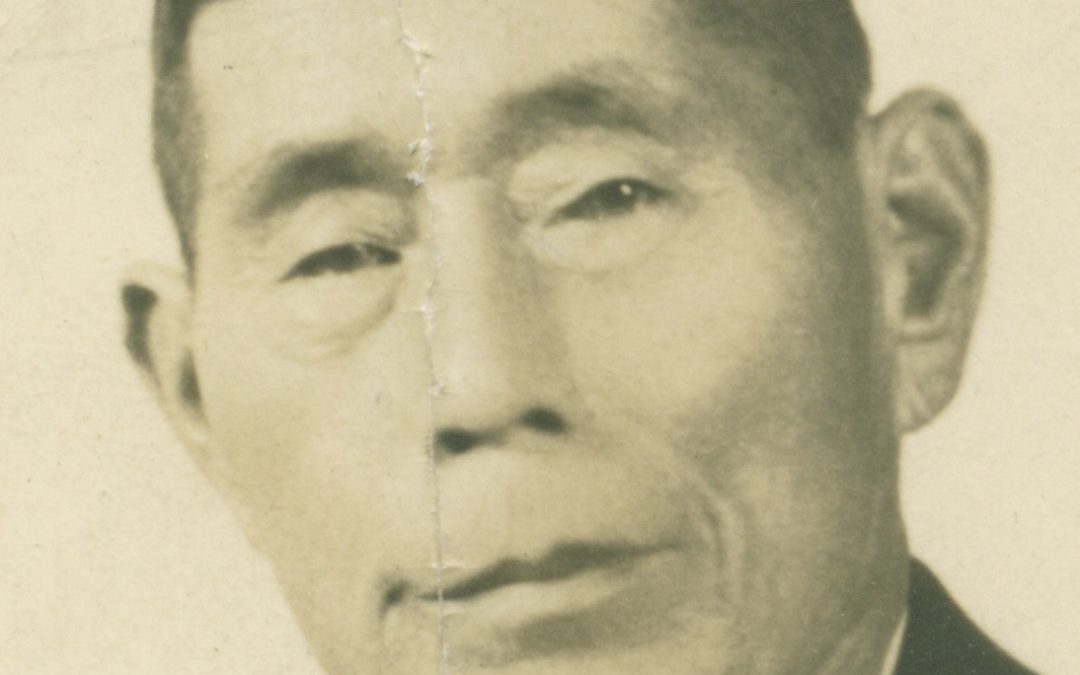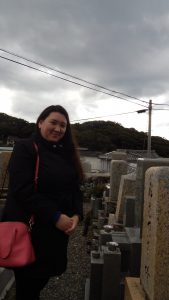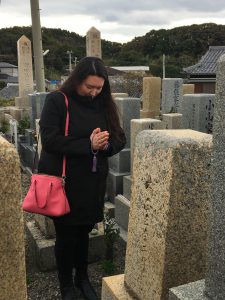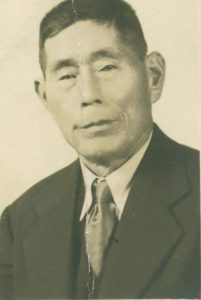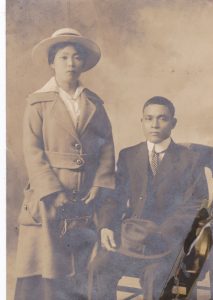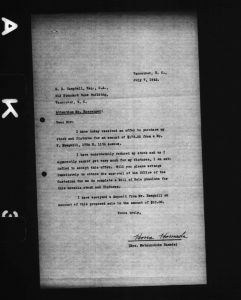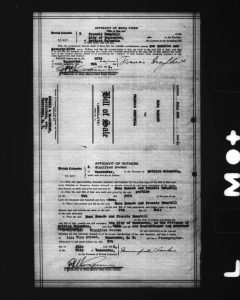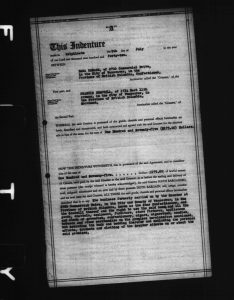Connecting memory with historical documents: Landscapes of Injustice digital archives
By Kelly Fleck
Often stories about my family’s history, especially those from the distant past, feel like legends or myths. They are stories from memories belonging to people long gone, often untethered to specific dates or places.
Over the last few years, I’ve had the opportunity to learn more about my family history, and those stories have started to take root in real life and places.
In December of 2019, I was in Mio, Japan, my family’s ancestral home, standing in front of my great-great-grandfather’s grave.
Kelly Fleck at Bunichi Hamade’s gravesite in Mio, Japan. Photo credit: Kelly Fleck
Mio is a small seaside village in Wakayama prefecture, with deep ties to Steveston, B.C. In 1888, Mio fisherman Gihei Kuno arrived in Steveston and saw how fruitful salmon fishing was in the Fraser River. He encouraged others from Mio to come to Steveston to work.
We believe my great-great-grandfather, Bunichi Hamade, arrived in Steveston in 1899. He would have only been 25 years old. His wife, Ito, and daughter, Hana, stayed in Mio. In 1902, he became a naturalized Canadian citizen, allowing him to work for the fishing cannery as a fish buyer, and he bought and lived on his first boat in Steveston. He urged Hana, my great-grandmother, to move to Canada. She came in 1918, when she was only 19 years old, with her husband, Matsunosuke.
Bunichi Hamade. Photo credit: Hamade Family Hana Hamade at 17 years old with her grandmother. Photo credit: Hamade Family
After writing about my Mio experience in Nikkei Voice, Landscapes of Injustice project manager Michael Abe asked if I would be interested in learning more about my family through case files collected in their digital archives. The archives are a culmination of four years of research from project members out of the University of Victoria, including case files from the Office of the Custodian, Bird Commission, land-title documents, fishing-boat-ledger files, and protest letters.
Nikkei Voice has been working with the Landscapes of Injustice project over the last year, sharing stories about Nikkei’s discoveries in their family case files.
The files have been a way to authenticate and understand my Bachan’s memories about our family. I wanted to learn about the store Hana and Matsunosuke ran in Vancouver. The store is the centre of many of my Bachan’s stories about her childhood. While my Bachan still remembers the address, she couldn’t remember the store name, so opening Hana’s files and seeing that information in front of me was like a light going on.
In the case files, I found the store, Star Confectionery, was right where my Bachan remembered at 2700 Commercial Dr. It was a small grocery store and connected to the back was the family home, a four-room frame house that they rented for $15 a month. My Bachan always says since Hana was an only child and lonely growing up in Mio, she wanted lots of children. I always imagine that home brimming with life from the nine Hamade children coming and going.
It was in front of the store where my Bachan learned to ride her brothers’ bike. When her brothers were busy, her father would send her off on the bike with groceries in the basket to deliver to customers. The store was where my Bachan learned to bake (she used to make killer pecan squares). She would take a mixing bowl down to the dry storage, take the flour and sugar she needed, and make treats for her siblings after a long day of school and work.
Hana’s case files offered a glimpse into what must have been a terrible time for the store. Documents from the Office of the Custodian detail her experience selling the business and its contents before the family was interned in Lemon Creek. At this point, her husband was at a road camp at Tete Jaune. Her eldest sons were also sent to road camps, Isao to Jasper and Yoshio to Solsqua. Hana was left alone to sell the business with her seven other children, the youngest five months old at the time.
The files detail an inspection made by H.D. Campbell of the store and its stock. Hana valued her grocery stock at $700 and the store fixtures at $300. My Bachan, 12 at the time, remembers watching Hana go through each item in the store with a man, I’m not sure if this was Campbell or the person who ended up buying the business. Each price Hana proposed, he would counter with a lower price.
In Campbell’s report, he valued the grocery stock at $300 to $400, and he writes the store’s fixtures, “are considerably run down and are generally a shabby set-up, are probably not worth more than half the amount valued at and might bring, if a realisation was necessary, an amount of slightly over $100.”
With not much time to negotiate or leverage a better offer, Hana sold the business, stock, and fixtures for $175 before the family was evacuated three days later to Lemon Creek. After finding a buyer, in a letter to H.D. Campbell, she writes, “I have considerably reduced by stock, and as I apparently cannot get very much for my fixtures, I am satisfied to accept this offer.”
Hana Hamade’s letter to H.D. Campbell on the sale of the store. Photo credit: Landscapes of Injustice lac_rg_117_c3_10463_hamade-hana
The Bill of Sale for Star Confectionery. Photo credit: Landscapes of Injustice lac_rg_117_c3_1-463_hamade-hana
I told my family what I had learned over dinner one night. We were thrilled that there were things my Bachan remembered over 75 years later. And there was a collective sadness as we reflected on Hana’s experiences.
It is hard to look into these files and see your family assigned to case number and the contents of their lives assigned a value—that value being much lower than what those items were worth and what they meant to them, but it’s important not to look away.
As a Yonsei, sometimes this history can feel far away. The stories from my Bachan are fragmented pieces and snippets, she was only a preteen at the time of internment, and her parents and older siblings protected her. At the end of March, Landscapes of Injustice launches their searchable digital database so all curious Japanese Canadians can find their family’s case files and reclaim their family’s stories. I encourage other Yonseis to type in their family name and see what comes up and ask questions while they still can.

